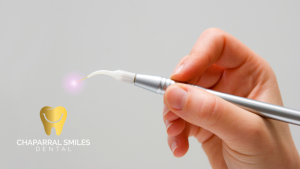There’s a common misconception that a cracked filling is merely a minor nuisance; however, you may be unknowingly setting yourself up for more significant dental problems. When fillings crack, they can create openings for bacteria to infiltrate, potentially leading to infections, decay, or even more severe structural damage to your teeth.
It’s necessary to address any signs of damage promptly to protect your oral health and avoid costly treatments down the line. Understanding the implications of cracked fillings can help you make informed decisions about your dental care.
Key Takeaways
- Cracked fillings can allow bacteria to enter the tooth, leading to decay, infection, and more severe dental problems.
- Early detection and timely dental treatment prevent complicated issues and costly procedures.
- Regular dental visits and good oral care help maintain filling integrity and protect overall oral health.
Can Cracked Fillings Lead to Bigger Dental Issues?
Over time, even the smallest issues with your dental fillings can escalate into larger problems if left unaddressed. Potential consequences of cracked fillings may include increased sensitivity, tooth decay, and even infections.
In this post, we will explore how cracked fillings can affect your oral health and what steps you can take to prevent further complications. By staying informed, you can make better choices regarding your dental care and maintain a healthy smile.
Cracked Fillings: A Close-Up on Risks
Understanding the risks associated with cracked fillings is essential for maintaining your oral health. A seemingly harmless crack can lead to a variety of complications, potentially affecting both your fillings and surrounding teeth.
By recognizing these risks, you can take proactive steps to prevent further dental issues and protect your overall health.
The Impact of Cracks on Filling Integrity
Cracks in your fillings can lead to significant compromises in their integrity. When a filling is cracked, it may not adequately seal the area, allowing bacteria to infiltrate and cause decay underneath. As time passes, such cracks can result in the filling failing entirely, necessitating costly and invasive replacements.
“Even small, unnoticed cracks in your fillings can trigger a cascade of damage beneath the surface of your tooth, leading to infections that compromise your overall oral health. A timely examination can catch these issues early and preserve the longevity of the filling.” – Dr. Kevin Kalin, Dentist in Calgary, Alberta
How Microfractures Compromise Dental Health
Microfractures may seem inconsequential, yet they can have far-reaching effects on your dental health. Even tiny cracks can create openings for bacteria, leading to infections or cavities that extend beneath the filling itself.
This means you might experience pain, sensitivity, or even more severe dental issues if these hidden problems go unchecked.
For instance, a microfracture might allow bacteria to enter the tooth structure, potentially resulting in an abscess or the need for root canal treatment. Research indicates that untreated microfractures can contribute to the failure of dental restorations.
Be proactive about addressing any visible cracks to safeguard not only your fillings but also the vitality of your surrounding teeth. Regular dental check-ups can help identify and address these issues before they escalate into more serious problems, ensuring your mouth remains healthy and pain-free.
The Cascade Effect: How a Simple Crack Can Escalate
A minor crack in your filling can set off a cascade of dental complications. Initially, bacteria may exploit the breach, leading to decay, but the process can spiral into infections or even abscesses over time.
A minor problem can significantly compromise the integrity of your entire tooth structure. Unattended, these developments not only compromise your oral health but can also necessitate more invasive and costly treatments.
Understanding this progression highlights the necessity of addressing seemingly insignificant dental concerns promptly.
The connection between cracked fillings and tooth decay
When a filling cracks, it creates a pathway for bacteria to infiltrate the underlying tooth structure. This exposure can result in tooth decay, as bacteria thrive in the crevices, eroding dental enamel and leading to cavities.
It’s imperative to act quickly, as untreated decay can advance and compromise the tooth further, possibly necessitating more extensive procedures like root canals or extractions.
Understanding the impact on surrounding dental structures
A cracked filling does not exist in isolation; its effects can reverberate throughout surrounding dental structures. For instance, the weakened state of a tooth can strain neighboring teeth during biting and chewing, potentially leading to damage or misalignment.
Additionally, problematic fillings can create pressure that affects your jaw’s alignment, potentially contributing to discomfort, headaches, or temporomandibular joint (TMJ) disorders. These interconnected repercussions demonstrate that a seemingly small issue can expand into broader oral health challenges.
Jaw misalignment can arise as a result of compensating for the compromised structure of the cracked filling. As teeth shift to alleviate pressure or pain, you may experience uneven wear or occlusal discrepancies, making them susceptible to fractures.
“When cracked fillings disrupt your bite, they can cause a ripple effect throughout your mouth, increasing strain on other teeth and even your jaw. Restoring the filling promptly ensures proper alignment and minimizes further complications.” – Dr. Kevin Kalin, Dentist in Calgary, Alberta
With increased stress on supporting dental structures, the likelihood of developing additional issues, such as gum disease or loss of bone density, intensifies. Addressing a cracked filling immediately is paramount not only for the health of the affected tooth but also for preserving the integrity of your entire dental landscape.
The Ripple Effect: How a Small Crack Can Escalate
A small crack in your filling can initiate a troubling chain reaction that affects your entire tooth. As the crack allows bacteria to infiltrate the commonly sealed surface, your tooth’s internal structure begins to weaken.
This breakdown may cause the filling to loosen over time, and what began as a minor inconvenience can escalate into more severe issues, such as cavities and potential tooth loss, if left untreated. Monitoring cracked fillings closely ensures that you catch these early developments before they become more serious problems.
Potential Complications: Infection and Sensitivity
Cracked fillings can lead to significant complications like infections and heightened sensitivity. The opening caused by the crack not only allows bacteria to invade but can also lead to pus buildup and painful abscesses.
Additionally, exposed nerves can trigger discomfort when you consume hot or cold foods, making everyday eating experiences more difficult.
Infections around a cracked filling can cause severe pain and swelling and, in some cases, may lead to systemic issues if left untreated. For instance, untreated dental abscesses can result in more than localized infections, potentially affecting your overall health as the bacteria enter the bloodstream.
Sensitivity can also be an ongoing concern, making simple tasks like sipping a warm beverage or enjoying a cold treat develop into uncomfortable experiences. Properly addressing cracks in your fillings can significantly reduce these risks and help maintain your dental health.
Signals Your Filling Is Failing: Recognizing the Warning Signs
Detecting issues with your fillings early can save you from more significant dental problems. Pay attention to any discomfort or unusual sensations in your teeth, as these can be indicative of a failing filling.
“A cracked filling doesn’t need to turn into a dental emergency—recognizing symptoms like sensitivity or rough edges promptly allows us to intervene early and preserve both your comfort and overall oral health.” – Dr. Kevin Kalin, Dentist in Calgary, Alberta
Changes in temperature sensitivity, persistent toothache, or visible cracks in the filling can all signal that it’s time to consult a dentist. Making it a habit to check for these signs can help maintain your dental health and prevent further complications.
Key indicators of cracked fillings
Look for several key indicators that may suggest your filling is compromised. These can include visible cracks or chips, sharp pain when biting down, and heightened sensitivity to hot or cold foods and beverages.
Additionally, the area might feel rough to the tongue, or you may notice food getting trapped more frequently around the filling. Each of these symptoms can reveal underlying issues that require professional attention.
When to seek professional evaluation
Taking immediate action when you recognize signs of a failing filling can prevent more serious dental health issues. Schedule an appointment with your dentist if you experience any symptoms like persistent discomfort, swelling around the filling, or changes in how your bite feels.
Early intervention often leads to simpler, less costly solutions, ultimately preserving the integrity of your tooth and averting the need for more extensive treatments.
A visit to your dentist will allow for a comprehensive evaluation of the affected area. They may perform digital X-rays or other diagnostic tests to assess the damage accurately.
Prompt action can result in a straightforward refilling procedure, potentially avoiding more complex treatments such as root canals or extractions. Being proactive helps ensure a healthier mouth overall and can save you from undergoing extensive dental work in the future.
Don’t let minor symptoms go unchecked; prioritize your dental health by staying informed about your fillings.
Unveiling Symptoms: When to Seek Immediate Care
Identifying symptoms of a failing filling can steer you toward prompt dental attention, potentially safeguarding your oral health from further complications. If you experience persistent pain, heightened sensitivity to hot or cold, or obvious cracks in your filling, it’s time to consult your dentist.
Quick action alleviates discomfort and prevents the risk of infection, decay, or tooth loss, ensuring that minor issues don’t escalate into major dental challenges.
Signs Your Filling Needs Attention
A few telltale signs indicate that your filling is in trouble. If you observe food becoming lodged around the filling, or if it feels rough or unusual, these could be signs of wear or fracture.
Additionally, a persistent dull ache or sharp pain while biting may suggest that the filling has lost its protective seal, allowing bacteria to penetrate beneath the surface and jeopardize the tooth’s integrity.
Distinguishing Between Minor Issues and Major Threats
Understanding whether an issue with your filling is minor or a signal of a larger problem can be challenging. Minor concerns like slight surface irregularities may warrant observation, while symptoms such as severe pain, swelling, or drainage point toward serious infection or failing fillings that require immediate intervention to prevent further dental damage.
Evaluating your discomfort can help you distinguish between simple wear and larger issues. For instance, surface sensitivity that diminishes quickly could indicate a minor issue, while ongoing pain, especially one that radiates to your jaw or neck, often suggests a deeper infection requiring urgent care.
By attentively monitoring your symptoms, you can make informed decisions about when to reach out for professional treatment, potentially avoiding severe complications down the line.
The Ripple Effect: Complications Beyond the Filling
A cracked filling can initiate a cascade of problems that extend far beyond the initial issue itself. Complications may include heightened sensitivity, pain, and increased cavity risk, all of which can lead to more severe dental conditions.
Your oral health is interconnected, meaning that what starts as a small crack can evolve into a much larger dilemma if not promptly addressed.
Potential for infections and abscesses
A compromised filling provides an entry point for bacteria, thereby significantly increasing your risk of developing infections. Once bacteria infiltrate the tooth’s inner chamber, it can lead to the development of abscesses, which are painful infections that can result in swollen gums, fever, and even tooth loss if neglected.
Seeking treatment early on can help you avoid these painful consequences.
The dangers of untreated structural damage
Neglecting a cracked filling can ultimately lead to significant structural damage to your tooth. A filling is designed to protect the integrity of your tooth’s exterior, and once it’s compromised, the underlying tooth becomes more vulnerable.
This vulnerability can increase the likelihood of fractures or complete tooth breakage, necessitating more invasive treatments such as root canals or tooth extractions. Ignoring the signs of a failing filling can turn what might have been a minor repair into a major dental overhaul.
Prevention Strategies: Protecting Your Dental Investments
Implementing effective prevention strategies can safeguard your fillings and overall oral health. Regular visits to your dentist for check-ups and cleanings help identify potential issues before they escalate.
Your dentist can evaluate the condition of your fillings and offer professional treatment to prevent complications. Staying proactive is key to enhancing the longevity of your dental investments.
Recommended Dental Care Practices
Establishing a daily dental care routine is imperative to maintaining your fillings. Brush your teeth at least twice a day with fluoride toothpaste and floss daily to remove food particles and plaque that can contribute to decay.
Additionally, consider using an antimicrobial mouthwash to further decrease bacteria levels in your mouth, providing an added layer of protection for your fillings.
Lifestyle Changes to Enhance Filling Longevity
Making simple lifestyle changes can greatly improve the durability of your dental fillings. Opt for foods low in sugar and acidity, as these can erode dental material and increase the risk of damage.
Drinking plenty of water throughout the day not only aids in hydration but also helps rinse away particles that can lead to decay, further preserving your fillings.
Moreover, reducing habits such as chewing on ice or using your teeth as tools can significantly impact the life of your fillings. Engaging in protective measures during activities like sports—such as wearing a mouthguard—can also prevent accidental trauma to your teeth and fillings.
If you grind your teeth at night, it’s a wise decision to discuss a nighttime guard with your dentist. By integrating these preventive measures into your lifestyle, you can enhance the longevity of your fillings and contribute to long-term dental health.
Your Path to Prevention: Care Strategies for Sustaining Dental Work
Maintaining your dental work requires conscious effort, and a few preventative strategies can significantly contribute. Simple daily habits, regular dental visits, and fostering oral health contribute significantly to the longevity of your fillings.
By implementing these care strategies, you can protect your smile and enhance your overall dental health over the long term.
Daily habits to reduce stress on fillings
Avoiding excessive pressure on your fillings is key to prolonging their lifespan. This means steering clear of hard foods that could crack your fillings and practicing habits such as refraining from chewing ice or using your teeth as tools for opening packages.
Incorporating a soft-bristled toothbrush into your routine can also help minimize wear and tear on your dental work while maintaining good oral hygiene.
The importance of regular dental check-ups
Scheduling regular dental check-ups ensures that any minor issues with your fillings, such as chips or wear, are identified before they escalate into larger complications. These visits allow your dentist to assess the health of your fillings and the surrounding tooth structure, helping to catch potential cracks or weaknesses early on.
Staying proactive about your dental appointments can save you time and money in the long run.
During these check-ups, your dentist will evaluate the strength and integrity of your fillings as well as the overall condition of your teeth and gums. The Canadian Dental Association recommends regular dental visits, typically every six months, for cleanings and check-ups, though individual needs may vary.
This regular interaction not only offers a chance to address any concerns but also provides tailored advice on how to care for your unique dental work based on your personal health history and lifestyle habits. Investing this time in your oral health now can pay off greatly in preventing more serious issues down the line.
Expert Insights: What Dentists Wish Patients Knew
Understanding the dental landscape can empower you to make informed choices. Many dentists express a desire for patients to recognize that problems, when caught early, can be managed with less invasive treatments, reducing discomfort and costs in the long run. Open communication with your dentist can help dispel myths and lead to better care strategies tailored to your needs.
By discussing any concerns you have, such as unusual sensitivity or discomfort, you build a partnership that prioritizes your oral health.
Common Misconceptions About Fillings
One of the most prevalent misconceptions is that fillings are permanent solutions. Many believe that once a cavity is filled, they can resume regular oral care without further thought.
In reality, fillings can wear down or crack over time due to daily pressures, and they require ongoing care to ensure they remain effective. Regular monitoring is vital, as is understanding that oral health is a continuum that requires constant attention.
The Importance of Regular Dental Check-Ups
Routine dental check-ups are vital for preventing minor issues from becoming major problems. These visits allow your dentist to catch potential complications early, such as cracking fillings or decay, before they escalate.
Ideally, you should visit your dentist every six months, but some may require more frequent visits based on oral health conditions. These appointments provide a detailed assessment of your dental work, ensuring it remains intact and functional.
During your check-up, your dentist not only examines existing fillings but also evaluates your overall oral health. They can identify signs of gum disease or tooth decay that you might overlook at home.
For instance, fluoride treatments and professional cleanings can enhance your oral hygiene and protect against future issues. Early detection often leads to simpler and less costly interventions, reinforcing the necessity of these regular visits to maintain your dental health and fillings.
Take charge of your oral health by prioritizing these vital appointments.
Revisiting The Role of Composite Materials: Are Modern Fillings Up to the Task?
Modern composite fillings have revolutionized dentistry by providing aesthetic and functional solutions that can withstand the demands of everyday use. These materials not only match the color of your teeth but also bond effectively, improving the strength of the tooth.
Advancements in dental materials, such as nanocomposites, have improved resistance to wear and fracture, making them a popular choice for both anterior and posterior teeth.
This evolution indicates a shift towards more durable and visually appealing options, ensuring your fillings can endure while seamlessly blending into your smile.
Advances in filling materials and their durability
Over the years, filling materials have evolved significantly, with advancements like nanotechnology enhancing durability and resilience. Modern composites are designed to mimic the elasticity and hardness of natural enamel, making them less prone to cracking under pressure.
Many dentists now utilize materials fortified with glass or ceramic particles, which further increase strength and longevity, offering you a more reliable solution that stands up well to the rigors of biting and chewing.
Limitations and considerations in filling choices
Choosing the right filling material requires a careful examination of several factors beyond aesthetics and durability. Different materials may vary in terms of thermal conductivity, biocompatibility, and suitability for specific locations in the mouth.
Certain materials may not perform optimally in areas subjected to high occlusal forces, and some can be more challenging to repair if damaged. Factors like cost, patient sensitivity to certain materials, and the potential need for future repairs should also weigh into your decision-making process.
While composite fillings offer many advantages, their limitations warrant careful consideration. For instance, although they bond well, they may not be the best option in areas of high stress, such as molars, where biting forces are greater.
Additionally, certain composites may have a tendency to discolor over time, which could detract from their aesthetic appeal. Availability and cost vary too; some high-end materials may require significant investment.
Hence, consulting your dentist about your individual circumstances can help ensure you make an informed decision that balances aesthetics, durability, and suitability for your specific dental needs.
Final Words
Upon reflecting, it’s clear that cracked fillings can indeed lead to more significant dental issues if left unaddressed. You may experience increased sensitivity, decay, or even infections, which can complicate your oral health.
Maintaining proactive dental care and consulting your dentist upon noticing any changes can help prevent complications, ensuring your teeth remain strong and healthy. Your oral health is important, so addressing issues like cracked fillings early will save you time, money, and discomfort in the long run.
Conclusion
Taking all these factors into account, you should be aware that cracked fillings can indeed lead to larger dental issues if left unaddressed. They may allow bacteria to penetrate the underlying tooth structure, resulting in infections, decay, or even tooth loss.
Regular dental check-ups and timely repairs are vital to maintain your oral health and prevent complications. If you notice any signs of damage in your fillings, be sure to consult your dentist as soon as possible to safeguard your smile.
Don’t Wait for a Small Crack to Become a Big Problem
If you suspect a cracked filling or are experiencing discomfort, it’s important to act quickly. At Chaparral Smiles Dental in Calgary, Alberta, our team is here to help protect your smile and prevent more serious dental issues down the road.
Book your appointment today by visiting our Contact Page or calling us directly. Early care is the key to lasting dental health.
Reviewed by: Dr. Kevin Kalin





